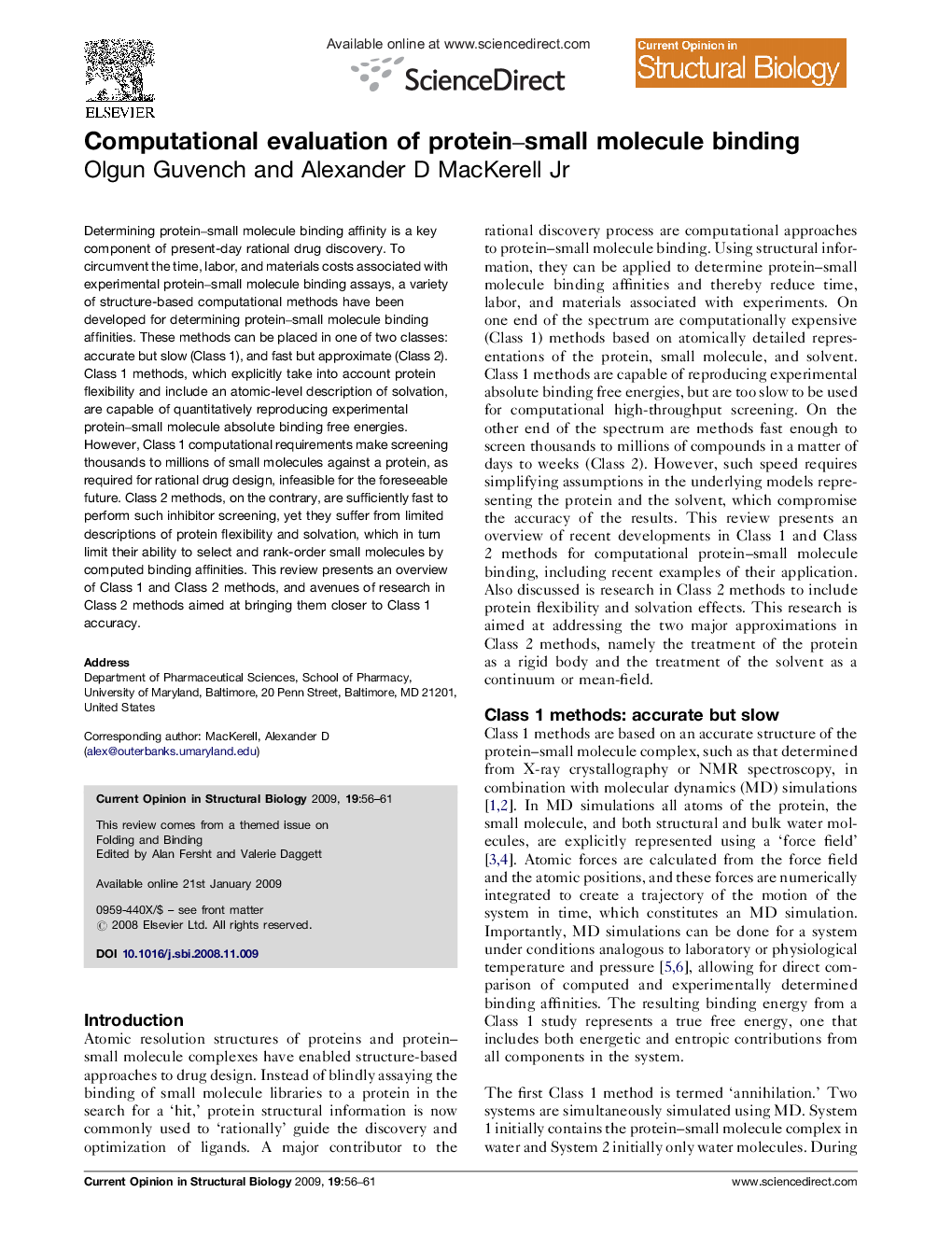| کد مقاله | کد نشریه | سال انتشار | مقاله انگلیسی | نسخه تمام متن |
|---|---|---|---|---|
| 10822643 | 1061684 | 2009 | 6 صفحه PDF | دانلود رایگان |
عنوان انگلیسی مقاله ISI
Computational evaluation of protein-small molecule binding
دانلود مقاله + سفارش ترجمه
دانلود مقاله ISI انگلیسی
رایگان برای ایرانیان
موضوعات مرتبط
علوم زیستی و بیوفناوری
بیوشیمی، ژنتیک و زیست شناسی مولکولی
زیست شیمی
پیش نمایش صفحه اول مقاله

چکیده انگلیسی
Determining protein-small molecule binding affinity is a key component of present-day rational drug discovery. To circumvent the time, labor, and materials costs associated with experimental protein-small molecule binding assays, a variety of structure-based computational methods have been developed for determining protein-small molecule binding affinities. These methods can be placed in one of two classes: accurate but slow (Class 1), and fast but approximate (Class 2). Class 1 methods, which explicitly take into account protein flexibility and include an atomic-level description of solvation, are capable of quantitatively reproducing experimental protein-small molecule absolute binding free energies. However, Class 1 computational requirements make screening thousands to millions of small molecules against a protein, as required for rational drug design, infeasible for the foreseeable future. Class 2 methods, on the contrary, are sufficiently fast to perform such inhibitor screening, yet they suffer from limited descriptions of protein flexibility and solvation, which in turn limit their ability to select and rank-order small molecules by computed binding affinities. This review presents an overview of Class 1 and Class 2 methods, and avenues of research in Class 2 methods aimed at bringing them closer to Class 1 accuracy.
ناشر
Database: Elsevier - ScienceDirect (ساینس دایرکت)
Journal: Current Opinion in Structural Biology - Volume 19, Issue 1, February 2009, Pages 56-61
Journal: Current Opinion in Structural Biology - Volume 19, Issue 1, February 2009, Pages 56-61
نویسندگان
Olgun Guvench, Alexander D Jr,